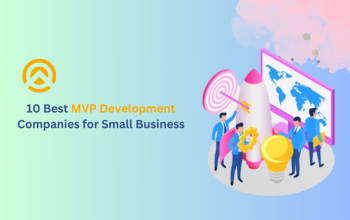Apps are becoming more and more common, with most well-known firms having their own mobile app to engage with customers and build brand awareness. According to Statista, 218 billion apps were downloaded in 2020, with a projected increase to 258 billion by 2022. The demand for mobile applications is certainly great, making the mobile industry extremely competitive.
Whether you want to make an app to complement your website, reach a new audience for your business, or simply think you have a great idea for a new app, we’ll walk you through each step of the process in this article. From your app idea to store publishing to app maintenance, you’ll get a step-by-step guide to create an app for beginners who want to learn how to make an app for the first time.
The process of creating software for mobile devices such as smartphones and tablets is known as mobile app development.
Although it helps you to create a perfect fit between your app idea and device capabilities, mobile app development is time-consuming and demands a lot of skills and expertise. Furthermore, it is usually a quite costly procedure.
An App Builder, on the other hand, is a cost-effective way to create an app without coding.
THINGS TO CONSIDER BEFORE BUILDING AN APP
DO PROPER PLANNING:
The planning stage of your mobile app development process is critical since it will act as the foundation for all subsequent work.
CREATE EFFECTIVE RESEARCH:
We can’t emphasize this enough: the success of your app, like any other product, necessitates extensive study. Understanding your niche and how your product will fit into your industry will aid in positioning and marketing strategy development. With your study, you’ll have a better understanding of your business, be able to prevent frequent blunders, and foster creativity within your company.
TARGET YOUR AUDIENCE:
Knowing who you’re attempting to contact is critical. Spend time learning about your customer’s goals and needs, as well as the problems they’re attempting to resolve. If you don’t have a clear target audience in mind, you can end up spending time and money developing an app that no one will use.
BUDGET CALCULATION:
The next step is to determine your operating costs and set a budget. What kind of business model do you have? What is the most valuable product you have? How are you going to make money? Whatever your app’s goal is, you’ll need to develop a long-term strategy to assure its success.
ANDROID VS APPLE:
Google Play Store and Apple App Store, the two most prominent software distribution systems, each have their unique set of features and perks. In a world where the majority of telephones are Apple or Android, don’t get lost in the crowd! It is impossible to overestimate the significance of placement. You’ll be able to reach a far wider audience and improve brand awareness if you debut on both platforms.
MIND THE GAP:
After conducting thorough research and establishing your target audience, you’ll know where you fit in and what problems your solution can solve. Think about what you can offer that your competitors can’t. What methods do you use to add value? What sets your product apart from the competition?
HOW TO CREATE A PERFECTLY DEVELOPED APP?
While it may be tempting to start creating right away, there are a few things you should do before. Don’t skip these stages if you want your app to succeed.
1: PLANNING AND ANALYSIS
It’s difficult to overestimate the importance of this stage of the development process. Planning ahead of time allows you to see where you are now and how to get to where you want to go. It’s ideal if you can communicate with your app development team or at the very least share your research with them before you begin.
The first step is to research the market and see whether there is any interest in your concept. This stage will assist you in determining trends and, most likely, fine-tuning the features.
After you’ve decided on a concept, you’ll want to do some research on your competition. Use a SWOT analysis to determine their strengths and weaknesses, and then change your plan accordingly.
2: PROTOTYPING
A prototype is a crude, early version of the software that will be released. There is no way to predict how the app will finally function, appear, or be received until the developer creates the initial prototype.
As a result, any mobile app developer’s priority should be to create a prototype. It gives the developer and the rest of the team a clear picture of how the project is progressing and what needs to be modified. Occasionally, a prototype is made available for the audience to try out and provide input on.
3: DESIGN
When it comes to establishing an engaging experience for your consumers, app design is critical. According to studies on website reading habits and interactions, a user can decide whether to stay on your screen or depart in as little as 500 milliseconds. It takes roughly 5 to 10 seconds for a person to determine whether or not to stay on screen and read the entire text.
Visual Complexity and prototypicality are the two main elements that influence this decision: the visual design’s complexity and the design’s representativeness for a certain category of websites. To put it another way, if you want to be successful with your app design and provide a fantastic user experience, keep it as basic and clear as possible, not overloaded, and flowing.
4: DEVELOPMENT
The development stage is where you begin developing the “final” version of the app’s code. This is where you use the information from the wireframes to make some final, maybe important decisions.
Waterfall and agile methodologies can both be used here. In general, an agile approach is preferred while developing a mobile application.
5: QUALITY TESTING
Testing should, ideally, take place concurrently with the development stage. To keep post-release expenditures low, it’s critical to test frequently. Unit tests, user interface tests, and integration testing are all required to catch any severe errors or oversights as soon as possible. Test cases can add time to the development process, but they can drastically cut the time and money spent on maintenance and support in the long term.
6: DEPLOYMENT
It’s time to put your app on the market and into the hands of real people.
Right now, your primary focus should be on uptime and visibility. Ascertain that the app is properly functional for the end-user. You don’t want your servers to go down for any reason.
You must submit your software to various app shops to get it on the market. Apps on the Google Play Store and the Apple App Store have different requirements. As a result, before you begin this procedure, you must be aware of all of the different submission standards.
7: MAINTENANCE
This stage should start at the same time as the release and go in the same direction. Maintenance is the process of checking on the state of your program, fixing any errors that may have appeared, and ensuring that it continues to function properly. Updating your app to support new devices or new versions of the OS is also part of maintenance.
SUMMARY:
It’s not always simple to create apps. Whether you’re building your first app or a series of apps, there’s always space for improvement. Instead of naively choosing an app development business and hoping for the best, it’s always a good idea to educate yourself.

Norah James is a professional Digital Marketer at YourDigiLab. It is a top leading digital marketing agency. She’s an expert in digital marketing, content marketing, and lead generation.




